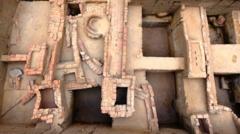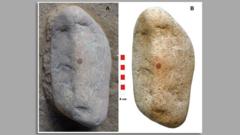In December 2021, Tom Moore, the head of the University of Durham’s Archaeology department, received an intriguing call from an amateur metal detectorist named Peter Heads. The discovery, he claimed, was significant, potentially dating back to the Iron Age. Fast forward three years, and this assertion has proven remarkable as the excavation team reveals one of the most transformative archaeological treasures in northern England.
“This is undeniably one of the most vital discoveries pertaining to the Iron Age in the U.K.” said Duncan Wilson, chief executive of Historic England. “It grants us unprecedented insights into the life and social structure of Iron Age communities in northern Britain and illustrates their connections to the broader European continent.”
Since the initial finding, Durham University’s excavation team has meticulously unearthed over 800 artifacts primarily dating to the Iron Age. Among these are cauldrons, a wine-mixing bowl, coral-coated horse harnesses, ceremonial spears, and notably, 28 iron wheels believed to be part of a chariot or wagon. This challenges previous assumptions about the extent and sophistication of elite transportation in Britain’s Iron Age era.
The implications of the Melsonby Hoard extend beyond mere objects; they encourage a renewed examination of ancient societies and trade networks, suggesting a more interconnected world during the Iron Age than previously recognized. As the research continues, historians eagerly anticipate how these findings will reshape our understanding of Britain’s ancient history.
“This is undeniably one of the most vital discoveries pertaining to the Iron Age in the U.K.” said Duncan Wilson, chief executive of Historic England. “It grants us unprecedented insights into the life and social structure of Iron Age communities in northern Britain and illustrates their connections to the broader European continent.”
Since the initial finding, Durham University’s excavation team has meticulously unearthed over 800 artifacts primarily dating to the Iron Age. Among these are cauldrons, a wine-mixing bowl, coral-coated horse harnesses, ceremonial spears, and notably, 28 iron wheels believed to be part of a chariot or wagon. This challenges previous assumptions about the extent and sophistication of elite transportation in Britain’s Iron Age era.
The implications of the Melsonby Hoard extend beyond mere objects; they encourage a renewed examination of ancient societies and trade networks, suggesting a more interconnected world during the Iron Age than previously recognized. As the research continues, historians eagerly anticipate how these findings will reshape our understanding of Britain’s ancient history.




















